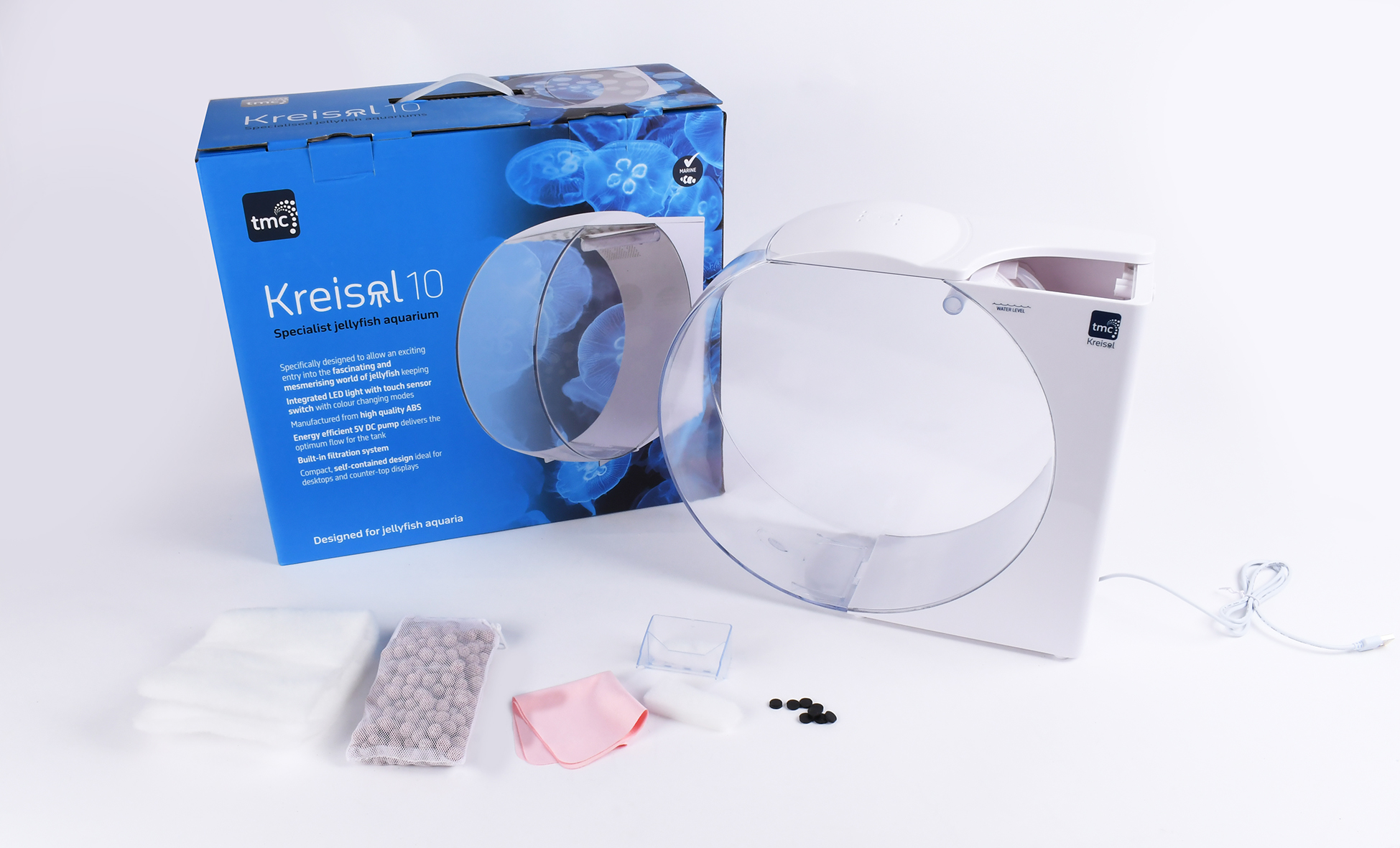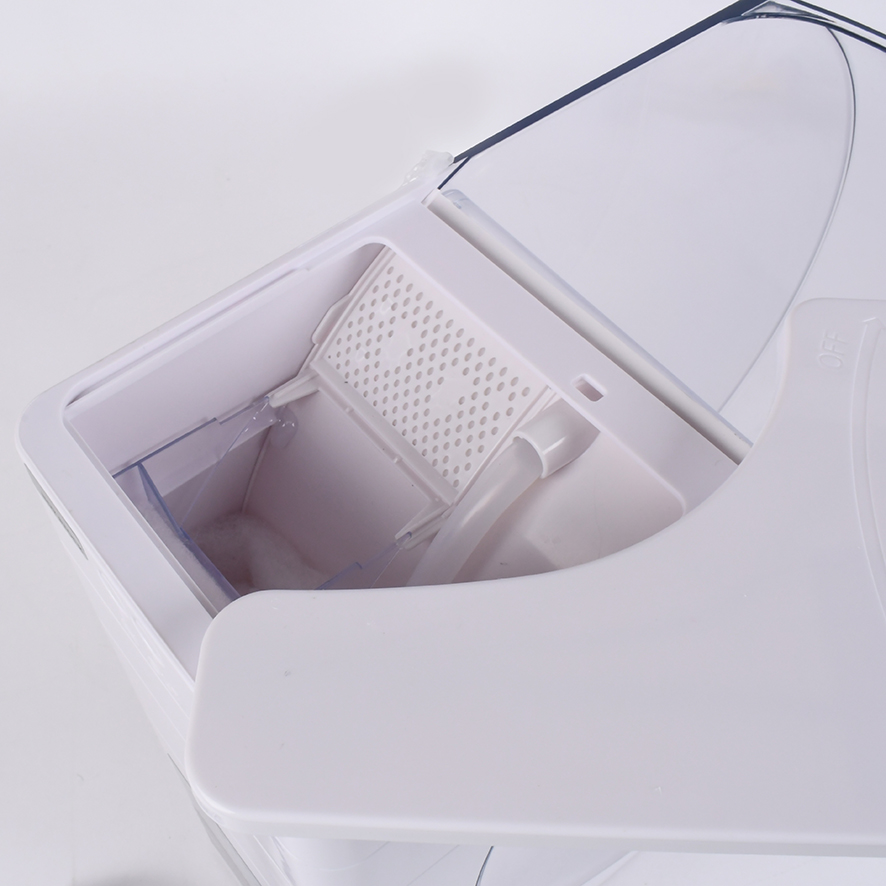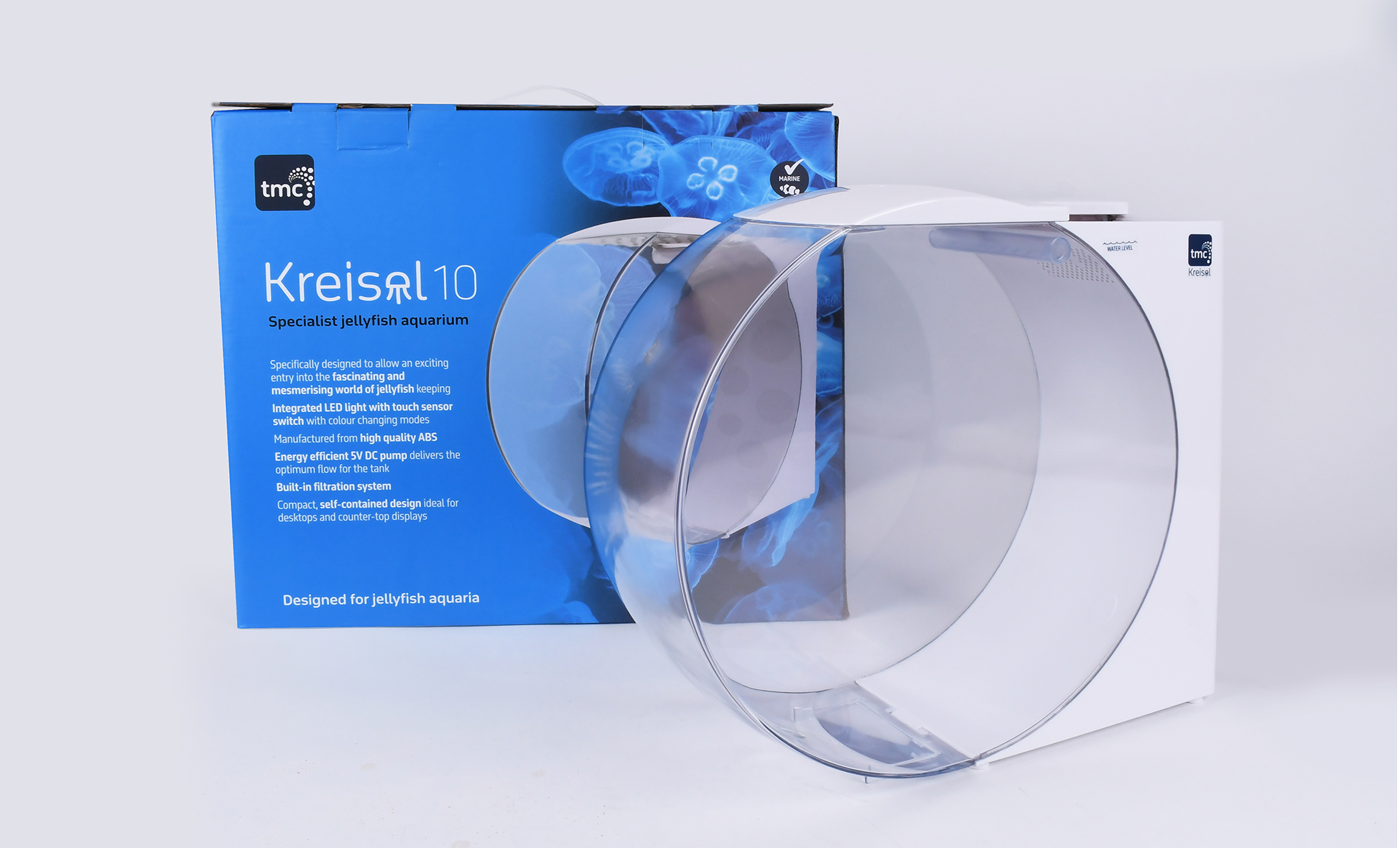Tropical Marine Centre has released two new nano tanks designed to enable anyone to keep Jellyfish at home. Usually restricted to public aquarium displays, Jellyfish are easy to keep apart from their need for specially-shaped aquariums free of bubbles and lacking the angular corners, flat walls, and filter inlets that pelagic species can get stuck to and damaged by.
The solution to this is a Kreisel – from the German for Merry Go Round or Spinning Top – a circular aquarium free of obstructions that keeps the jellies in constant suspension while still filtering the water at the same time. Now TMC has launched two mini Kreisel aquariums that are specialized enough to house jellies at a size and price point that everyone can accommodate. And that could have some positive implications for the aquarium hobby as a whole.

Pico tanks
The new Kreisel aquariums are small by saltwater aquarium standards, holding just 10 liters/2.64 gallons and 15 liters/3.96 gallons respectively, with footprints of just 35x12cm/13.8”x4.7” and 41x14cm/16”x5.5”. They’re actually small by Kreisel standards too, but we need to trust Europe’s largest livestock supplier as they’ve been working with the world’s public aquariums for 53 years, and when it comes to Jellyfish, and the experts they supply, this isn’t their first rodeo. They recommend the two tanks as being suitable to house Moon, Cannonball, Marble, and Spotted jellyfish species.

Light and strong, the tanks are made from ABS plastic and are powered by a 2-watt, 280lph/74gph DC pump with a USB connection. That’s right, just two watts of energy to get these suckers spinning and filtering, and the touch sensor color-changing LED lights are just 4 watts and 6 watts each too. If you choose temperate jellies you won’t need a heater either, so that’s saltwater aquarium energy efficiency on a scale we never heard of or seen before, especially when we pay for home energy by the 1000 watts per hour, it won’t even register…
A new Jellyfish opportunity
But apart from offering experienced reefers like us the chance to “play” with keeping Jellyfish at home for small financial outlay (or to raise juvenile seahorses!), this is part of a much bigger picture. Just like with Octopuses, Jellyfish appreciators stretch way beyond fanatical fish keepers or current aquarium owners, and that alien-like form and rhythmic pulsing of jellies manage to fascinate most humans, young and old, rich and poor, and those who are currently outside of the hobby too.
Price has been a barrier to entry in the past, as most European-made Kreisels before it retailed for upwards of £500/$635. Being small, and made from ABS instead of acrylic, UK and European pricing for TMC’s new version is tiny in comparison, at £159.99/€223.99 for the Kreisel 10, and £169.99/€237.99 for the Kreisel 15. That’s refreshingly low…

The more people who have access to and can afford to buy into these tanks, the better, as it will help to boost what has been quite a stagnant market of late, it may just recruit new aquarium owners, and a percentage of those will hopefully stay in the hobby for good. TMC only supplies aquatic retail stores and unusually, they can supply both the tank and the jellies too, as well as all the necessary salt, food, test kits, etc. It’s a one-stop jellyfish shop.
The future is Jellyfish
Scanning the news as we do every day, we also can’t help but notice that jellyfish numbers appear to be on the rise in the planet’s oceans. Present for 500 million years, they are adaptable to climate change and have bloomed of late, while many other ocean creatures have struggled to adapt to a rapidly changing world.
You can’t overfish jellies, they are too plentiful and reproduce too readily. They are non-sentient, you can aquaculture them if you really want to, they are easy to feed, and they don’t need a heater. This is energy-efficient saltwater aquarium-owning with the most eco credentials possible. It’s saltwater aquarium 2.0. And we should all definitely explore it.



